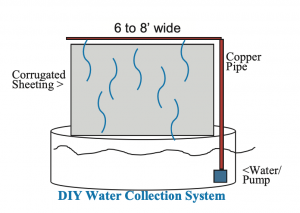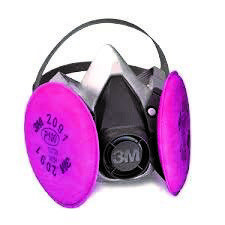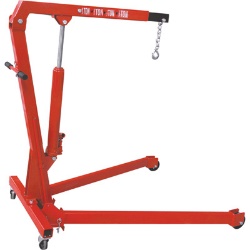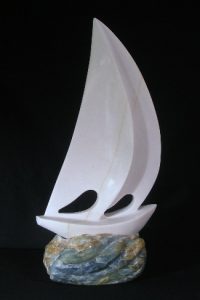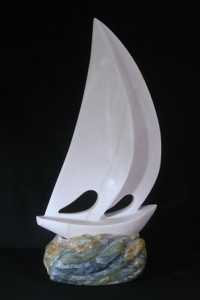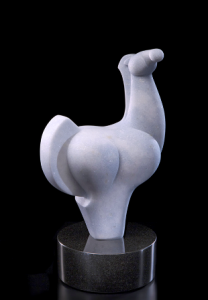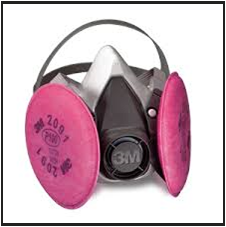Don’t. One wrong twist or extension can have long-term implications. I got impatient and reached over the edge of my trailer to lift the edge of a heavy stone just a little. Cantilevered at a 90-degree angle I did the worst thing and pulled my lower back. That took over a year to heal. (If this should happen, get on a flat surface and start stretching immediately to minimize the damage.)
Of course, always lift with your back straight and have your legs take most of the weight. But machines, even simple ones, make much sense. To move horizontally I pry the stone up a little with a pry bar and then insert two short 1-1.5” pipes so that I can roll the stone forward. I may have to lay a few boards on the floor or grass so the pipes will roll but I will slowly get to my destination.
You can lift a stone with a portable engine hoist (around $200). You can also tilt a stone forward and put a 2×4” block under it. Then lift the other side and put a block under that side. Now lift the opposite side and insert a second block of wood. Keep repeating this process until you reach the desired height. See this interesting Youtube of a guy building his own Stonehenge with any power tools: https://www.youtube.com/watch?v=-K7q20VzwVs
Remember never lose height. If a stone is already up in the air, like on a pickup bed or car trunk, do not throw it on the ground to be lifted anew onto a stand. Do everything you can to avoid having to lift it a second time.
